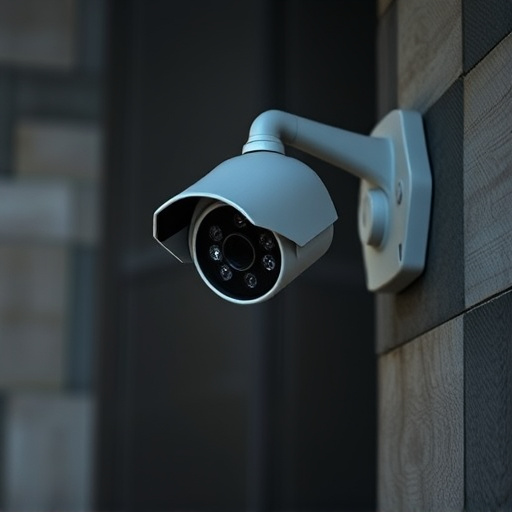Hidden security cameras, seamlessly integrated into everyday objects like smoke detectors and wall art, offer discreet surveillance with high-resolution sensors, night vision, and motion activation. They provide valuable evidence, deter criminal activity, and bring peace of mind. However, challenges include privacy concerns and ethical considerations regarding deployment. Cameras come in diverse types, each serving unique purposes, and proper placement ensures optimal coverage. Legal and ethical complexities arise from strict privacy laws and community trust issues. AI and machine learning advancements enhance their effectiveness, making them powerful tools for personal and commercial security.
Uncover the intriguing world of hidden surveillance cameras with our comprehensive guide. Explore the intricacies of concealed devices that offer enhanced security, from their advantages and potential drawbacks to strategic placement techniques. Delve into legal and ethical considerations shaping their use, and discover emerging trends redefining home and business protection. Unravel the complexities of these innovative yet controversial technologies.
Understanding Hidden Security Cameras: A Comprehensive Guide
Hidden security cameras, also known as covert or concealed cameras, are a sophisticated and often controversial aspect of modern surveillance technology. These devices are designed to be virtually invisible, integrated into everyday objects like smoke detectors, light bulbs, or even decorative wall art, making them an attractive option for both personal and professional security needs. Understanding how they work, their applications, and the ethical considerations surrounding their use is essential in today’s world where privacy and security intersect.
A hidden security camera captures video footage discreetly, utilizing advanced techniques to avoid detection. They often employ high-resolution sensors, night vision capabilities, and motion activation features to ensure clear and unobstructed surveillance. These cameras can be remotely accessed via smartphone apps or recorded for later review, providing peace of mind and valuable evidence in various scenarios. From protecting valuable assets at home or in a business to deterring criminal activity in public spaces, hidden security cameras offer a level of discretion that traditional surveillance systems lack.
Advantages and Disadvantages of Concealed Surveillance
Hidden security cameras, also known as concealed or covert surveillance, offer both unique advantages and potential drawbacks in the realm of monitoring and security. One of the primary benefits is their ability to capture unaware moments and activities discreetly, making them ideal for deterring crime and catching perpetrators off guard. These hidden cameras can be strategically placed in various settings, from homes and businesses to public spaces, providing a layer of protection that traditional visible security systems might not offer. Their discreet nature encourages a sense of safety and peace of mind, as potential intruders or unethical employees may be less likely to engage in suspicious behavior if they know they’re being watched.
However, the concealed aspect of hidden security cameras also presents certain challenges. Privacy concerns are a primary issue; while the intention is often to protect, the absence of transparency can make individuals feel surveilled and invade their personal space. Additionally, ethical considerations arise when deciding where and how to deploy these devices, especially in public areas. The potential for abuse or misuse of recorded footage is real, and strict guidelines and regulations are necessary to ensure responsible surveillance practices. Moreover, relying solely on hidden cameras might not be a comprehensive security solution, as they can sometimes miss critical details or fail to capture clear images due to angle, lighting, or obstructions.
Types and Placement Strategies for Hidden Cameras
Hidden security cameras come in various types, each designed for specific purposes and offering unique features. Some are miniature, easily concealed within everyday objects like smoke detectors, light bulbs, or even potted plants. These compact cameras provide discrete monitoring, ideal for personal safety or business security. Other advanced models feature motion sensors, night vision capabilities, and high-resolution video quality, ensuring comprehensive surveillance.
Placement is a critical aspect of setting up hidden security cameras. Strategically choosing locations allows for optimal coverage without raising suspicion. Common spots include entryways, windows, doors, and dark corners where potential intruders might lurk. Discreet placement near valuable assets or sensitive areas offers enhanced protection. Additionally, aligning camera angles to capture clear visuals from multiple perspectives further enhances the surveillance capabilities of these hidden devices.
Legal Considerations and Ethical Implications
The use of hidden security cameras raises a series of legal considerations and ethical implications that cannot be ignored. In many jurisdictions, the placement of surveillance devices is governed by strict privacy laws, which dictate where and how they can be installed to protect individuals’ right to privacy. The installation of hidden cameras without consent may constitute a breach of these laws, leading to potential fines or lawsuits.
Ethically, the use of hidden security cameras also invites debate. While they can serve as a deterrent for criminal activities, their secretive nature can erode trust between individuals and institutions, creating an atmosphere of suspicion. Moreover, the data collected by these devices must be handled with care to ensure it is not misused or accessed by unauthorized parties, further complicating the ethical landscape surrounding hidden security cameras.
Future Trends in Hidden Camera Technology
The evolution of hidden security camera technology is an exciting prospect, with innovations set to transform the way we ensure safety and privacy. One prominent trend is the integration of artificial intelligence (AI) and machine learning capabilities. These advanced features enable cameras to recognize faces, analyze behaviors, and detect anomalies, enhancing their ability to alert authorities or homeowners of potential threats. AI-powered hidden security cameras can learn patterns, differentiate between familiar and unfamiliar individuals, and even predict unusual activities, making them highly effective tools for both personal and commercial security.
Additionally, the development of more miniature and versatile camera designs is driving the market forward. Smaller hidden cameras can be discreetly placed in various environments, from everyday household objects to advanced remote-controlled devices. This stealth technology allows users to capture high-quality footage without raising suspicion, ensuring better evidence collection for security purposes or legal investigations. With ongoing advancements, hidden security cameras are becoming more accessible, powerful, and versatile, shaping the future of surveillance and security solutions.
